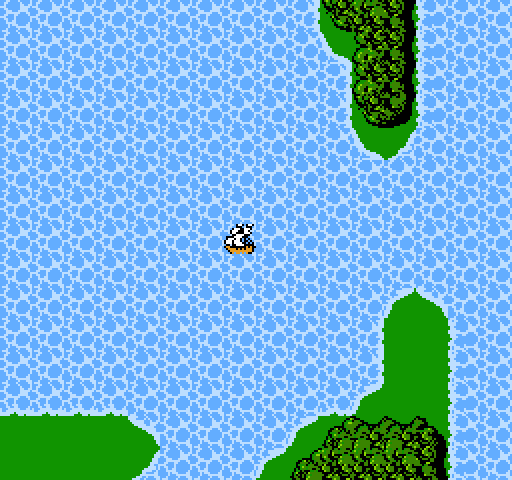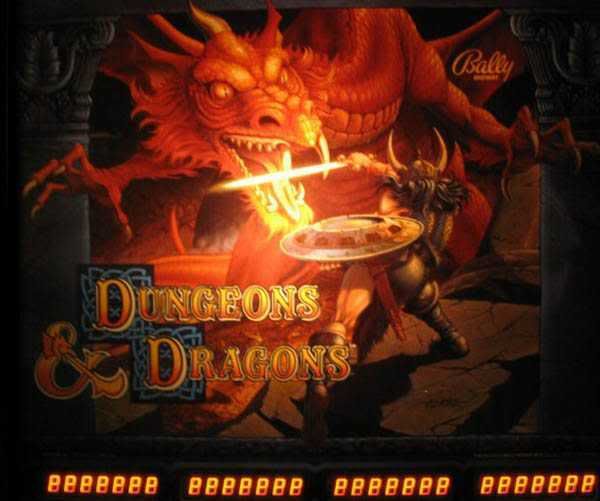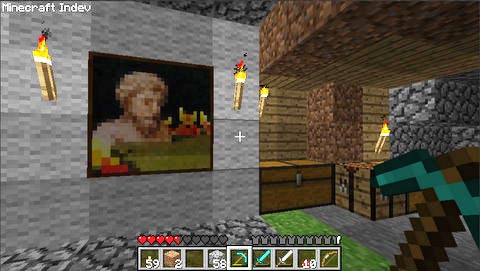Remember our discussion of player investment strategies? Levels were a big part of that. They're a huge part of what makes the current crop of MMORPGs so popular. They are the proverbial carrot on the stick, and a huge part of the gaming lexicon. I'll certainly do a more thorough "Featured Feature" on them at some point.
The thing is, as a matter of personal taste, I kinda hate levels.
 |
| FUCK YOU! |
The thing is, in many RPGs, levels do one thing: make you keep playing. Less often, however, do they make you have fun.
Let's look at 3 examples: an old video game, a new video game, and a tabletop game.
 |
| There was a joke here, but it was expired and I had to throw it out. |
Raise your hand if you recognize this game by screenshot alone. Now, put your hand down unless you recognize that specific spot in that specific game. Everyone with their hand still up is missing a few hours of their lives that SquareEnix will never give them back.
You see, that bit of grass in the bottom right is what has become known as the "Peninsula of Power." It's a little bit of land that, due to a mistake on the part of the developers, generates random encounters that are intended to exist on the continent north of that thin strip of water separating the two.
The result of this ephemeral land-bridge incident is that players would spend hours walking around those few cells of grass in order to fight high level monsters and increase their levels more rapidly than normal. The sadness here is two-fold. Firstly, that such a practice is neccessarry to reasonably complete the game. Secondly, that the game expects you to do this without such a short-cut.
You see, back in the day grinding wasn't the groan-inducing buzz word it is today. It was the status quo. Today it's something to be reduced when possible. Back in the day it was expected to be in every RPG you played. The game went from levels A-Z, with major fights at each vowel, and it was up to you to ensure you were at the correct level when those came up. The designers knew how powerful they wanted the early and end game enemies to be, without much thought to the player's trip up the lv ladder. Pacing hadn't really occurred to anyone.
 |
| Lv57 Commenter |
The above is a picture of a Troll from World of Warcraft - one of about 3 model varieties (regular, savage, and big brute guys). Now, I first fought an enemy with that model in, say, the high lv 20 range. That one's lv57. However, it's okay, because the player is lv67 and can easily whoop this one. However, I'm sure there's a lv67 Troll out there as well, though he'll be of a slightly different coloration.
The
Law of Chromatic Superiority is an old trick used in video games to recycle a limited supply of enemies. At lv1 you fight a blue slime, at 10 a red one. The thing is, you're doing the same all the way up the ladder. Sure, the lv40 wolves are larger and black, and your sword glows now, but you're still doing the same thing you did for your tutorial quest. At some point, it's just the same process over and over - with something more EXTREME added with each iteration.
The levels are not actually representing progress at all. Just cycles.
Worse, is that, in the MMO market, every level until the cap is often a simple time-sink, as most new content is produced solely for those at the "end-game." They need to keep people paying, and thus need to produce content for those who've expended that in the original box. Except, most haven't, they've just rushed to the end because that's where the content is. So, for player and developer alike - that's a good bit of effort wasted and less fun and profit than should have been made all around.
In MMOs, my pet peeve with levels is that they are absolutely counter-intuitive to the whole Massively Multiplayer bit. Anyone who's tried to take a party of real life freinds into an MMORPG, and play through the game with them will know my pain. It doesn't work. Someone will feel like the others are holding them back, or like everyone is outpacing them. People will reserve a character for playing with the group, but then grow resentful as they feel like they're being forced to play what has quickly become their "alt" character. A lv30 player can not have fun with a lv4 player, period. It wastes everyone's time. In a genre built entirely around social interaction, in which the player base is its entire defining feature, the only thing more egregious than this design mistake is its prevalence. Cudos to EVE Online, Guild Wars, and, to a lesser extent, City of Heroes for at-least reducing this issue.
 |
| A D&D pinball machine that doesn't list your score in "Experience Points" has poorly utilized its source material. |
And finally we have Dungeons & Dragons, which we must always return to whenever we discuss RPGs because, frankly, it's always to blame. It codified the trope. Those games were directly influenced by this game and, unfortunately in some cases (see: the later retconned Vancian magic system of FF1), its rules. Levels are always part of the package.
Even D&D's designers have, to some degree, noted some problems with levels. You see, fans have always identified a "sweet spot" for D&D. There's a certain level range where you've been given enough options to build a unique character, things are challenging but not imminently fatal, and you're facing off against some of the game's more iconic and fun enemies. Life, as an adventurer, is good. The low levels were a meat grinder, but you survived and its made you appreciate your status. Higher up, however, and things start getting silly. Nothing can face you any more. You've collected so many various baubles and powerful abilities than two are bound to interact in some unplanned way and, suddenly, you can transmute dragons to gold pieces as a free action twice per round. God grow angry with you, then go sulk in a corner lest they incur your wrath. You are literally creating life and new planes of reality in some rule sets. Meanwhile, you're DM is crying himself to sleep at night as he wrestles with how to make the game fun again without being a total dick.
So, with 4th edition, the designers explicitly stated that they'd made a conscious effort to take what they felt was the sweet spot and spread it over a wider level range. However, they never actually said that the whole game was now in the sweet spot. The same old problems exist, only somewhat diminished.
The sad thing is, the designers have designed themselves into a corner. Look at a D&D bestiary, and you'll find several monsters with "Dire" versions, Dragons with over 5 developmental stages, and, in 4th edition especially, creatures that plainly just have different versions at different levels for no reason other than allowing them to be used more often. The published adventures must be labeled for their appropriate levels, thus reducing their wide-appeal and the resources the adventure writers have to work with.
In all 3 cases, the level system isn't really working for players or designers.
In closing, I'll briefly explain my preference: Don't level up, level out. The issue in all the above cases is that it is assumed that once a milestone is reached a character must become more powerful in every meaningful way. The result is a rapid upward power creep that is rarely manageable. Instead of making characters more powerful, however, why not allow them to become more versatile?
When have you ever read a story where the hero overcomes their obstacles by simply becoming physically stronger? It's never the exercise or powers the hero has gotten that defeat the monster, but the things they've learned through their experience that allow him to solve their predicament.
We'll touch more on this alternative later.







































